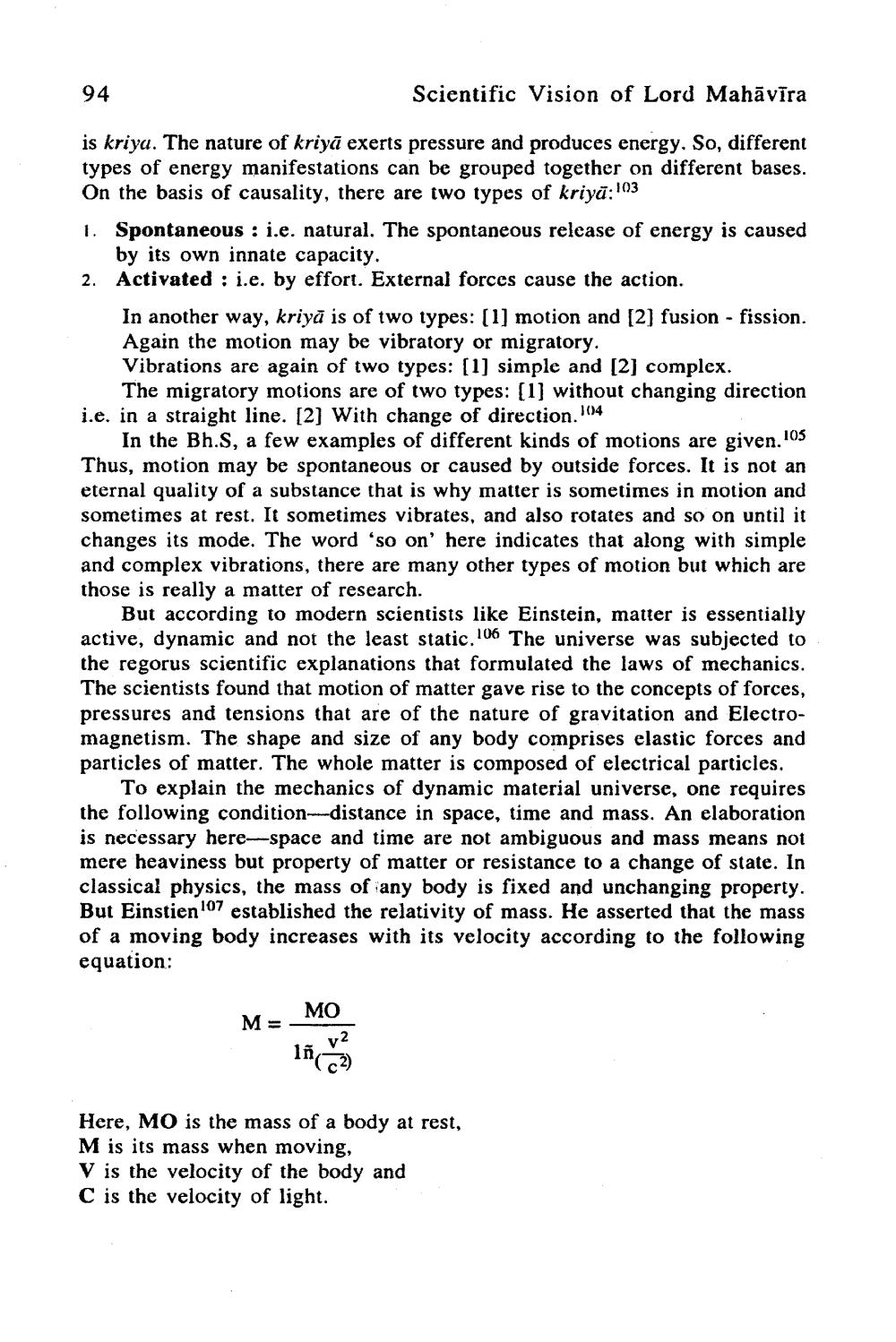________________
94
Scientific Vision of Lord Mahāvīra
is kriya. The nature of kriyā exerts pressure and produces energy. So, different types of energy manifestations can be grouped together on different bases. On the basis of causality, there are two types of kriya: 103
1. Spontaneous : i.e. natural. The spontaneous release of energy is caused
by its own innate capacity. 2. Activated : i.e. by effort. External forces cause the action.
In another way, kriyā is of two types: (1) motion and [2] fusion - fission. Again the motion may be vibratory or migratory. Vibrations are again of two types: [1] simple and [2] complex.
The migratory motions are of two types: (1) without changing direction i.e. in a straight line. [2] With change of direction. 104
In the Bh.s, a few examples of different kinds of motions are given.105 Thus, motion may be spontaneous or caused by outside forces. It is not an eternal quality of a substance that is why matter is sometimes in motion and sometimes at rest. It sometimes vibrates, and also rotates and so on until it changes its mode. The word 'so on' here indicates that along with simple and complex vibrations, there are many other types of motion but which are those is really a matter of research.
But according to modern scientists like Einstein, matter is essentially active, dynamic and not the least static. 106 The universe was subjected to the regorus scientific explanations that formulated the laws of mechanics. The scientists found that motion of matter gave rise to the concepts of forces, pressures and tensions that are of the nature of gravitation and Electromagnetism. The shape and size of any body comprises elastic forces and particles of matter. The whole matter is composed of electrical particles.
To explain the mechanics of dynamic material universe, one requires the following condition-distance in space, time and mass. An elaboration is necessary here--space and time are not ambiguous and mass means not mere heaviness but property of matter or resistance to a change of state. In classical physics, the mass of any body is fixed and unchanging property. But Einstien 107 established the relativity of mass. He asserted that the mass of a moving body increases with its velocity according to the following equation:
M= MO
Here, MO is the mass of a body at rest, M is its mass when moving, V is the velocity of the body and C is the velocity of light.




